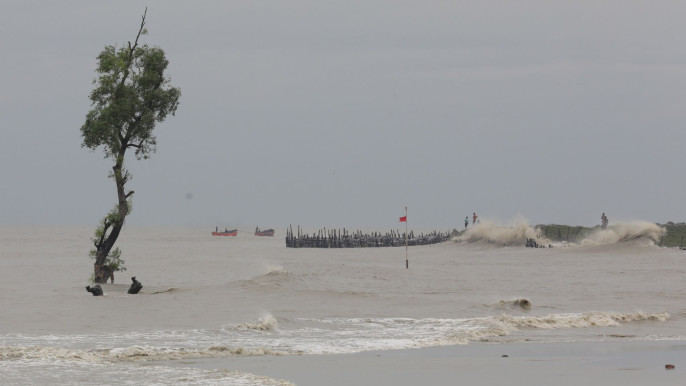
The country’s import-export goods are transported by sea through three seaports. Among these three seaports, Chittagong Port handles the most goods. However, in the span of 9 years, Chittagong’s monopoly share in the sea transport of goods has decreased slightly. Mongla Port has started to take this share of Chittagong. New seaports have also been added to the sea trade partnership.
Chittagong to Mongla
Due to the ease of road communication due to the Padma bridge, new opportunities have been created for the transportation of goods through the Mongla port in the southern region. In the recently concluded fiscal year 2022-23, more than 100 garments were exported from Dhaka’s Mirpur, Gazipur, and Savar through Chalan Mongla. Which were once exported through Chittagong Tidal. Again, the coal import of power plants and private companies has been added to the list of goods transported through Mongla port. In this, Mongla’s share in the transportation of goods is increasing. Coal for thermal power plants is now being imported by shifting to the outer anchorage of Payra seaport at Patuakhali established a decade ago. Apart from this, there is stone import. Construction of two new terminals at Mongla and Payara is underway. The officials of the two ports are expecting that the share of Mongla and Payra in the transportation of goods by sea will increase if the two terminals are constructed.
Port sector experts say that single port dependence always poses risks in foreign trade. This risk is more in Bangladesh. Because goods have to be brought and taken to Chittagong port by crossing the narrow waterway of Karnaphuli River. If there is a major accident on this waterway for any reason, it will create a major disruption in foreign trade, especially the import and export of goods in containers. For this, the factory needs port facilities close to large industrial areas for the import and export of raw materials. If port facilities are increased in other places like Chittagong, it will also help in the industrialization of the country. Export-oriented industries in particular will get an added advantage in global competition by bringing raw materials quickly and manufacturing products from them through nearby ports.
When asked to know, the president of BGMEA, the association of ready-made garment industry owners, Farooq Hasan told Prothom Alo, “The use of Mongla and Payra ports is increasing. The exporters got a little relief. In the future, the pressure on the Chittagong Tidal will decrease further. Because work is being done to develop Payra and Mongla ports. On the other hand, if Matarbari becomes a deep sea port, it will be more convenient. He said Padma Bridge has been completed. Road connectivity has improved. Due to this, the use of Mongla Port is increasing among garment exporters. Foreign buyers have also started appointing their designated shipping agents at this port. If the use increases, we will take the initiative to launch container ships directly to Europe from a port like Chittagong.
Tidal tension in Chittagong
According to the data of the National Board of Revenue (NBR), a total of 5 crore 2.5 million tonnes of goods were transported by sea in the fiscal year 2014-15 before the commencement of goods transportation through Payra port. Out of this, 92 percent or 4 crore 81 lakh tons of goods are transported through Chittagong port.
In a span of 9 years, Mongla’s share has increased to 10 percent in the recently concluded financial year. According to NBR, 1 crore 12 lakh tonnes of goods were transported through Mongla port in the financial year 2022-23. At the same time, 100 million tons are transported through Chittagong Tidal, which is 87 percent of the total cargo transported by sea. And about 3.8 lakh tons or 3 percent of the total sea trade is transported through Pyara, the third seaport of the country.
That is, in the span of 9 years, the share of Chittagong in terms of volume in sea trade has decreased by 5 percent. Among the significant changes at this time was the opening of Payra Port. And the second is the launch of the Padma Bridge, which has created an opportunity for easy import and export of goods from Dhaka to Payra and Mongla ports.
Tidal days in Mongla
After independence, Chittagong and Mongla seaports were used for sea trade. In the beginning, most of the foreign trade was transported through Chittagong port. But Mongla was no less. 28 percent of the total import-export goods were transported through Mongla port. According to the two ports, during the fiscal year 1973-74, the cargo transported by sea was 49 lakh 66 thousand tons. 72 percent of this product is transported through Chittagong port. The remaining 28 percent is transported through Mongla Port.
In the beginning, around one-third of Mongla was Chittagong Tidal transported by import-export goods, but it gradually decreased. Two decades ago, the share of sea freight through Mongla port fell to single digits. From there, Mongla’s share is increasing again.
Government fertilizers, wheat, raw materials for the cement industry, LPG, coal, etc. are mostly imported through Mongla Port. In the last financial year, 55 percent of private car imports came through Mongla. Earlier, only the products of the Mongla export processing zone were exported, but now because of the Padma Bridge, manufactured garments are being exported from Dhaka. For example, in the last financial year, Epilion Knitwear of Mirpur, AKM Knitwear of Savar, Anant Garments, Sharmin Apparels, Sterling Denims, Flamingo Fashions Limited of Gazipur, Apex Spinning and Knitting Mills, Liberty Knitwear, Fakir Apparels and Knitwear of Narayanganj have exported their products through Mongla.
Mongla Port Board Member (Harbor and Marine) Captain Md. Asaduzzaman told Prothom Alo, because of the Padma Bridge, garment exports from factories in the Dhaka region have already started through Mongla. Port channels are now being excavated to accommodate larger ships than at present. Pigeons are coming.